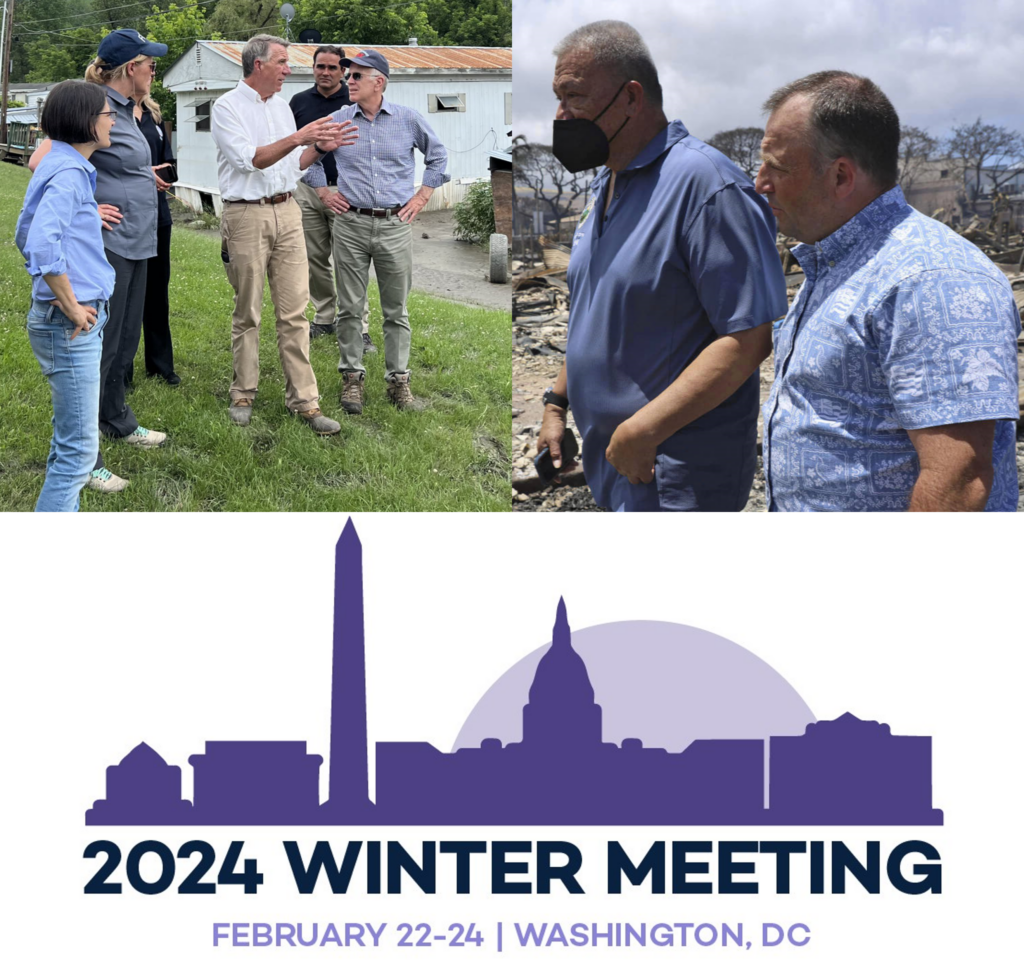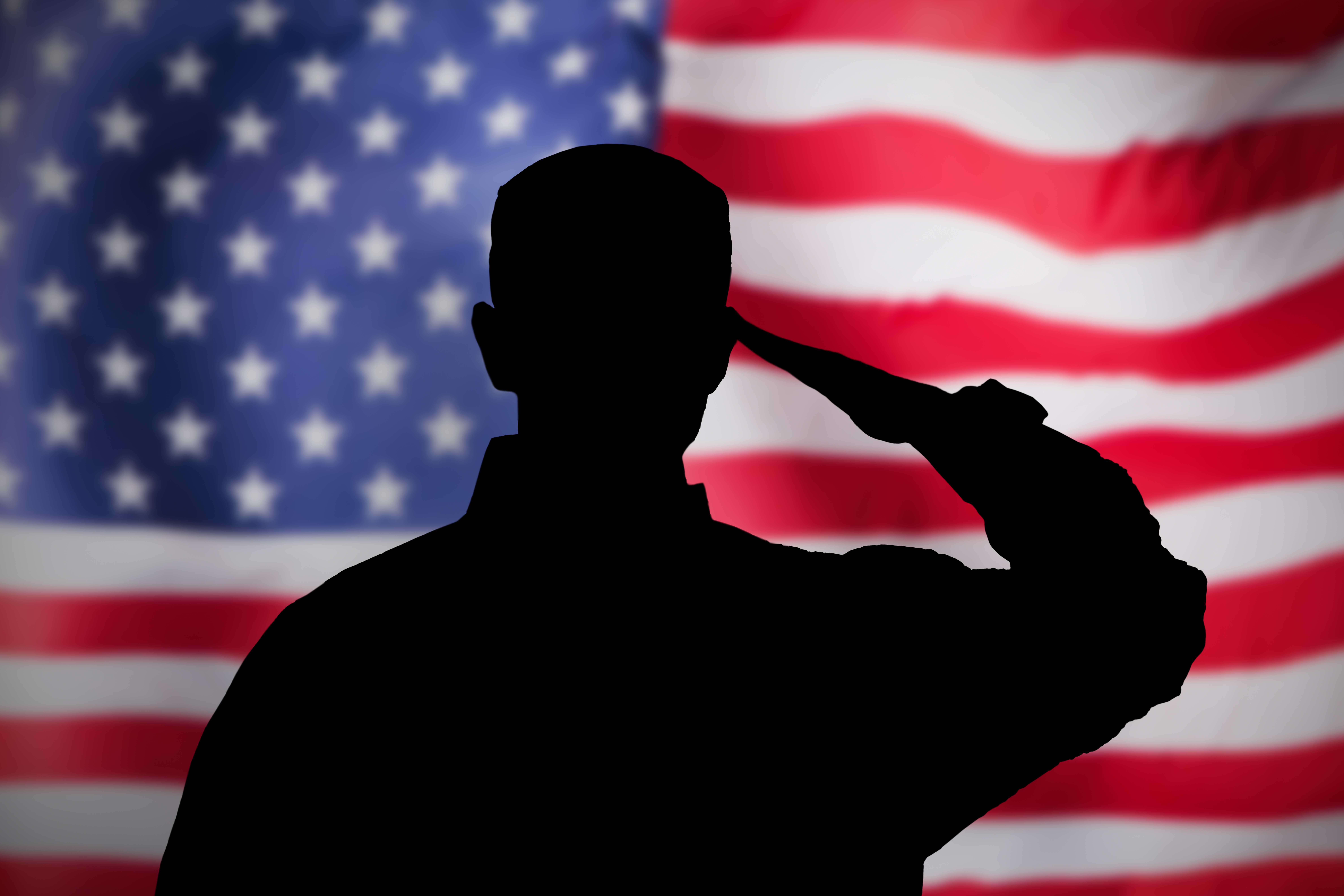NGA’s Public Health and Disaster Response Task Force focuses on a broad range of issues, including: health care, nutrition, cybersecurity, immigration, human services, public health emergency issues, and policies under the jurisdiction of Federal Emergency Management Agency (FEMA) and National Guard.

During the 2024 NGA Winter Meeting, Hawaiʻi Governor Josh Green and Vermont Governor Phil Scott, Co-Chairs of the Task Force, will convene a session focused on how largescale emergencies continue to threaten national and state response systems. Federal government and private sector leaders, including representatives from FEMA and SAMHSA, will join Governors to discuss modernizing critical infrastructure models to optimize capacity to navigate long-term recovery efforts. The Task Force’s meeting will also focus on state best practices for survivor resilience, data sharing and staff preparedness.
Governors Green and Scott recently shared more insights into the work the Public Health and Disaster Response Task Force is leading, including details about the upcoming session.
How has your state or territory dealt with disasters?
Governor Green: Last August, hurricane-force winds fanned fires on the islands of Maui and Hawaiʻi causing the deadliest wildfire in modern U.S. history. To alleviate the conditions of this emergency, state and local officials swiftly coordinated to execute our State Comprehensive Emergency Management Plan which included: the State Emergency Operations Center activating Emergency Support Functions to continue disseminating public information, mobilizing resources, and coordinating with partner states for mutual aid assistance; the Hawaiʻi Department of Transportation and public works crews readying debris-clearing equipment as well as road signs and barricades; mobilizing the Hawaiʻi National Guard to assist in citizen evacuation, rescue missions, traffic control, security, and debris clearance; and the Department of Education, Department of Health, American Red Cross and other Voluntary Organizations Active in Disasters members coordinated efforts to open shelters from August 8, 2023, onwards, supporting local operations as needed. My administration proactively addressed the wildfires by promptly seeking federal assistance to safeguard our most vulnerable communities, regions, and resources. This proactive measure was essential to support and facilitate the implementation of my administration’s approach. I’ve worked closely with President Biden and his administration to secure FEMA Stafford Act funding for debris removal and emergency protective measures. This crucial support is expected to save Hawaiʻi hundreds of millions of dollars during the recovery process, allowing us to sustain immediate assistance to families in need. In addition to the immense federal, state, and county assistance received, we saw an outpouring of support from concerned citizens, community groups, and private-sector partners who graciously volunteered at the disaster site, offered up their homes, or organized donations drives where tens of millions of dollars poured into the relief efforts from all over the world. Working with these partners in the two weeks after August 8, we relocated more than 8,000 displaced survivors into hotel rooms and condos across Maui. My administration is deeply committed to securing long-term housing for each Lahaina fire survivor and will cover the fair market value of each rental for up two years and provide a property tax exemption for 18 months to those dedicating their short-term rentals to housing displaced fire victims. The enduring strength of our people is a constant inspiration as we embark on this collective journey of healing. Lahaina belongs to its people, and we are committed to rebuilding and restoring it the way they want it.
Governor Scott: Last July, Vermont faced significant flooding causing severe damage to communities, homes and businesses. I’m proud of the way my team responded, taking action early by pre-placing resources, including swift water rescue teams ahead of the storm’s arrival, and then working quickly with federal and local partners to address the needs of towns, emergency responders, and road crews. This work included proactive response – going out and looking for homeowners and municipalities in need of assistance rather than always waiting for them to come to us. Our immediate response may be over, but there is still a long road ahead for us to recover and build back stronger and more resilient. Climate change is happening before our eyes, and we will continue to see more weather-related disasters as a result. We must focus on better preparing our communities. Planning is key. This summer also reminded me that we rely heavily on volunteers to do essential work in response and recovery, from small things like checking on neighbors to taking on larger projects like mucking out basements, gathering debris, or cleaning up the neighborhood park. I’m grateful for everything Vermonters have done and continue to do to help their neighbors and communities.
How is your state or territory increasing critical infrastructure needs for emergency preparedness and recovery?
Governor Green: Since the wildfire devastation on August 8, 2023, our state has taken significant measures to reinforce our critical infrastructure for emergency preparedness and recovery. My administration has set aside up to $600 million in the budget for recovery costs that will continue into 2027. We have prioritized strengthening communication networks, improving early warning systems, fortifying evacuation routes, and ensuring that first responders have the necessary resources and training to prevent, mitigate, and address future emergencies. At the Hawaiʻi Emergency Management Agency (HI-EMA), we’ve created 20 positions to work on firebreaks, fire assessments, and wildfire matters. HI-EMA is in process of administering the Hazard Mitigation, Grant Program from the August 2023 Fires. These funds – estimated at over $150 million will allow partners in the state to reduce and mitigate hazard vulnerability to people, property, infrastructure, and the environment. In collaborating directly with President Biden and his administration, the Department of Energy has provided $95 million through the Bipartisan Infrastructure Law to harden Hawaiʻi’s electric grid, improve service, limit damage during future events, and prevent failures in the future that could lead to severe events. The wildfires magnified the consequences of climate change, which contributed to causing the worst natural disaster in our state’s history. This legislative session, I am renewing my efforts to pass a climate impact fee to help us stare down the terrible impacts of climate change. A $25 Climate Impact Fee on visitors would provide the needed resources to protect our environment, increase awareness of the impacts of climate change, and would be invested into beach preservation, fire breaks, and other prevention measures to help us avoid tragedies like the one last year on Maui. The collaborative reconstruction of Lahaina will inform our vision for Hawaiʻi as a resilient state.
Governor Scott: Since our last devastating storm (Tropical Storm Irene) in 2011, Vermont has invested heavily in resiliency work, like expanding storm and wastewater capacity, buy outs, floodplain restoration, hardening infrastructure, expanding mitigation tools, and more. These efforts are focused on revitalizing our communities and minimizing the damage resulting from natural disasters. Additionally, we are seeing increased cybersecurity threats, and I’m concerned that we will see more incidents that severely impact state operations or disrupt critical resources. To better prepare, we’ve created a Cybersecurity Advisory Council to help us better understand the preparedness of critical utilities and health care facilities, share information, and share best practices.
Can you please share how you think the NGA Winter Meeting helps further bipartisan policy solutions for public health and disaster preparedness?
Governor Green: The NGA Winter Meeting serves as a crucial platform for fostering bipartisan policy solutions, particularly in the context of public health and disaster preparedness, such as the Maui fires on August 8, 2023. By convening governors from across the nation, the NGA facilitates the exchange of insights, best practices, and collaborative strategies. The lessons learned from the Maui fires incident response, coordination, and recovery can be shared, allowing for the development of more effective and bipartisan policies that enhance public health and disaster preparedness efforts. This meeting provides an invaluable opportunity for governors to collectively address challenges, share expertise, and work towards comprehensive solutions that benefit all states.
Governor Scott: All Governors deal with similar challenges, regardless of their political party. NGA meetings are a great opportunity for us to talk about the issues we all face. During the pandemic, these connections were essential to helping states get necessary supplies and collaborate on solutions for managing public health needs. With many governors on the Public Health and Disaster Response Task Force having dealt with a variety of emergencies like flooding, fires and hurricanes, this year’s meeting will be another opportunity to learn from each other on issues critical to the safety of the people we serve.












